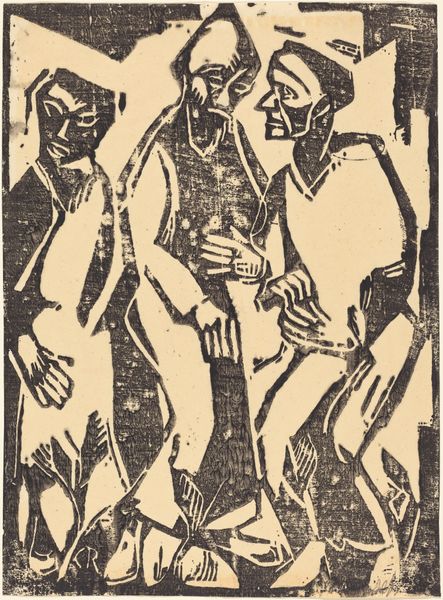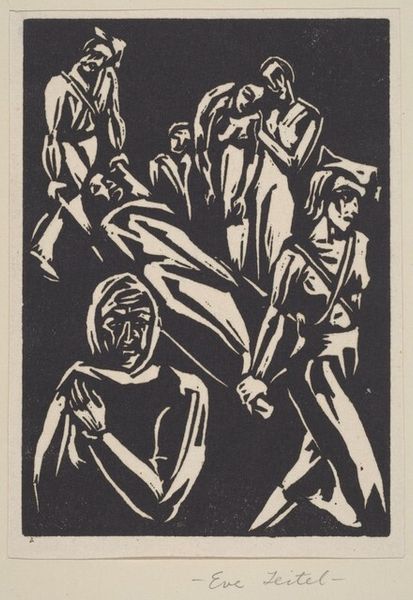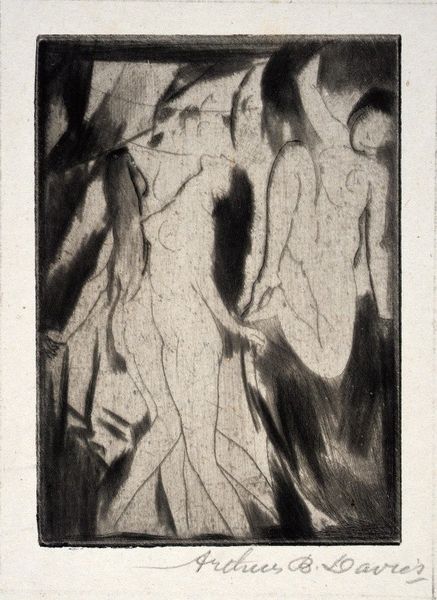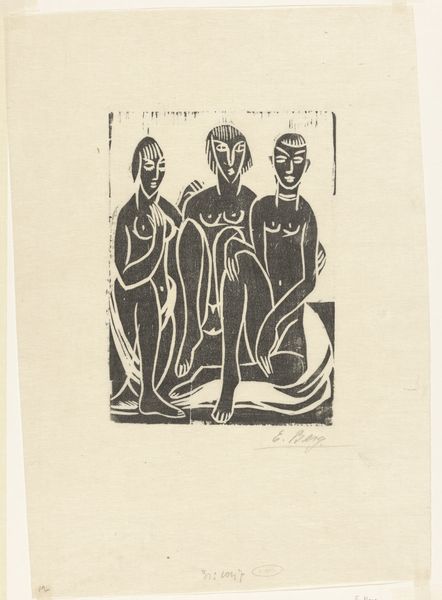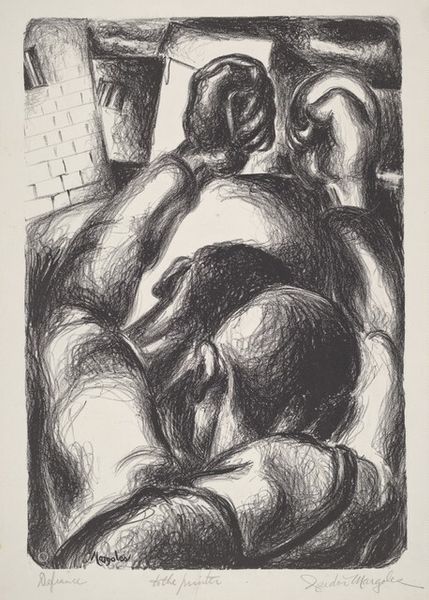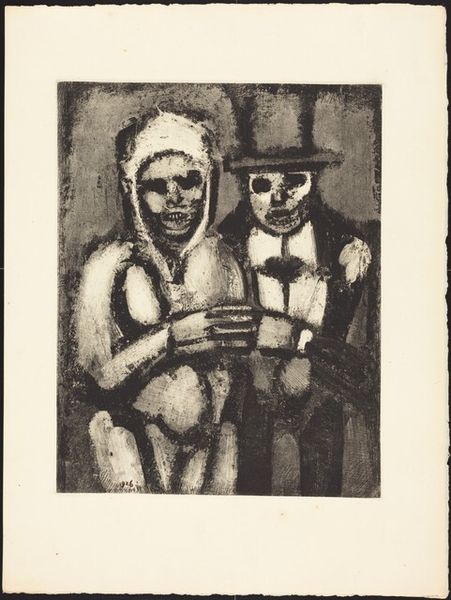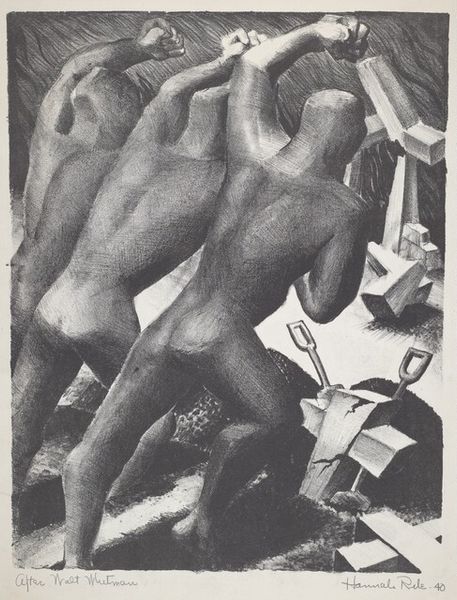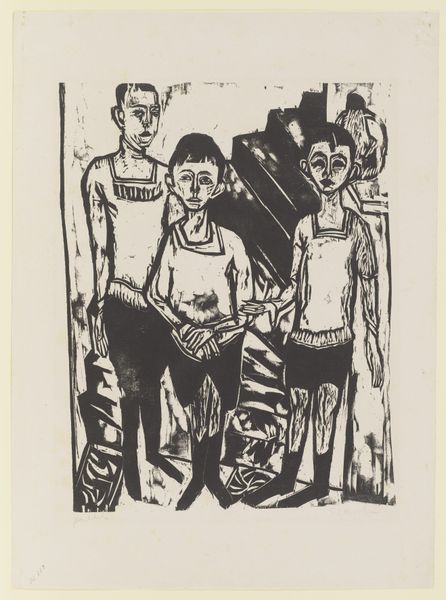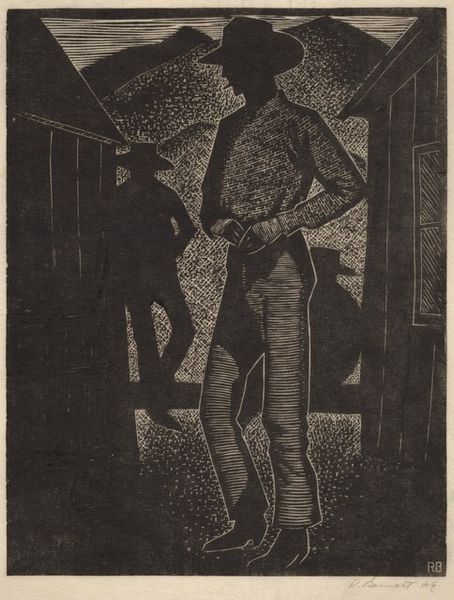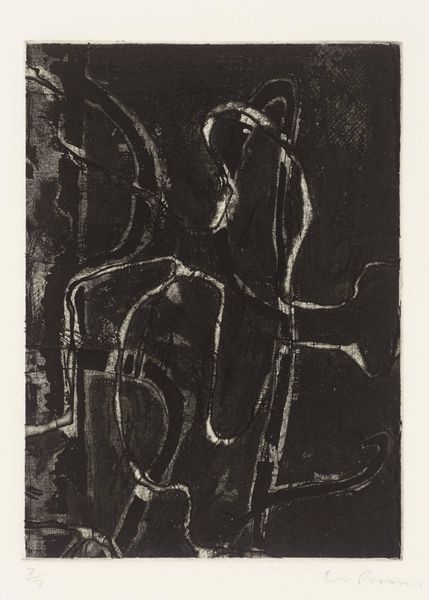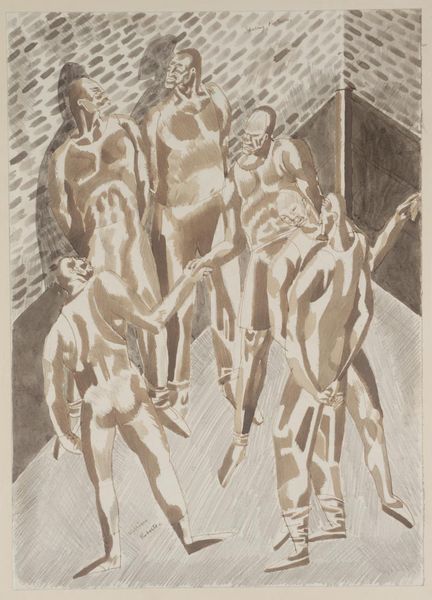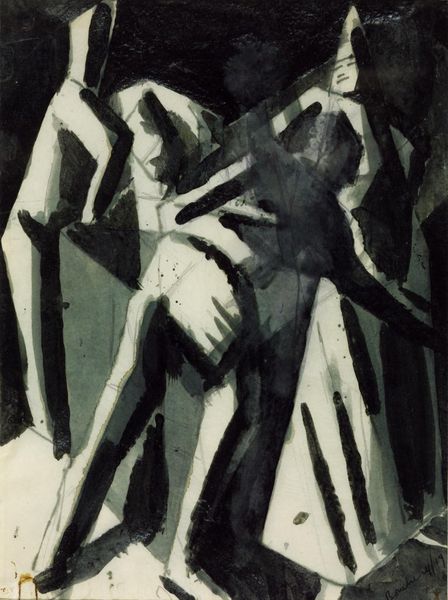
drawing, print, graphite, charcoal
#
portrait
#
pencil drawn
#
drawing
# print
#
pencil sketch
#
charcoal drawing
#
social-realism
#
pencil drawing
#
group-portraits
#
graphite
#
portrait drawing
#
charcoal
#
charcoal
#
realism
Dimensions: plate: 265 x 190 mm sheet: 335 x 249 mm
Copyright: National Gallery of Art: CC0 1.0
Editor: So, this is Alexander Stavenitz's "Breadline," likely from around 1933. It looks like it's made with graphite and charcoal, or perhaps a print of a charcoal drawing. The overall effect is really somber. The figures seem to melt into the shadows. What do you see in this piece, looking at it from your perspective? Curator: I see a powerful statement on social and economic inequality. Considering it was made around 1933, it's impossible to ignore the context of the Great Depression. Stavenitz captures the desperation and the dehumanization inherent in systems that fail to provide for basic human needs. What does it tell us that the figures are essentially faceless? Editor: That's a good point; it makes them more universal, less individual, right? Almost like symbols of the suffering masses. Curator: Precisely. And look at their clothes, the heavy, dark fabric that seems to weigh them down, mirroring the emotional burden they carry. This connects to wider art historical concerns with representation of labour and class. The artist chose a very specific medium. Why do you think they used these materials? Editor: Perhaps because charcoal and graphite lend themselves to a gritty, realistic portrayal? Curator: Yes, absolutely. But it's also important to think about access. During times of economic hardship, readily available, inexpensive materials would have been crucial for artists wanting to document social realities. It is inherently accessible in ways that something like oil on canvas wasn’t. How does the concept of access change our interpretation of the work? Editor: Wow, that's insightful. I hadn’t thought about the choice of material in that light. It really deepens the connection to the historical context. Curator: It's about situating the work within the realities it depicts. It encourages dialogue. What about you – has your perception shifted? Editor: Definitely. I now see "Breadline" as more than just a depiction of hardship, but as a powerful commentary on systemic failures and resilience through shared experience. Thanks.
Comments
No comments
Be the first to comment and join the conversation on the ultimate creative platform.
